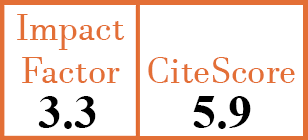Rapid paper
A panel incorporating genetic variants of RIN3, NLRC3, and SLX4 shows promise in predicting remission after tofacitinib therapy in rheumatoid arthritis patients
P.-K. Chen1, Y.-M. Chen2, C.-F. Cho3, J.J. Chen4, J.-C. Wu5, D. Daf6, N.-R. Gong7, D.-Y. Chen8
- Rheumatology and Immunology Center, China Medical University Hospital, Taichung; and College of Medicine, China Medical University, Taichung, Taiwan.
- Division of Translational Medicine, Department of Medical Research, Taichung Veterans General Hospital, Taichung; School of Medicine, National Yang Ming Chiao Tung University, Taipei; and College of Medicine, National Chung Hsing University, Taichung, Taiwan.
- Rheumatology and Immunology Center, China Medical University Hospital, Taichung; and College of Medicine, China Medical University, Taichung, Taiwan.
- College of Medicine, National Chung Hsing University, Taichung; Institute of Biomedical Sciences, National Chung Hsing University, Taichung; and Biotechnology Center, National Chung Hsing University, Taichung, Taiwan.
- LabTurbo Biotech Corporation, Taipei, Taiwan.
- LabTurbo Biotech Corporation, Taipei, Taiwan.
- Rheumatology and Immunology Center, China Medical University Hospital, Taichung, Taiwan.
- Rheumatology and Immunology Center, China Medical University Hospital, Taichung; College of Medicine, China Medical University, Taichung; and Institute of Clinical Medicine, Chung Shan Medical University Hospital, Taichung, Taiwan. dychen1957@gmail.com
CER18931
2025 Vol.43, N°9
PI 1548, PF 1553
Rapid paper
PMID: 40693418 [PubMed]
Received: 19/05/2025
Accepted : 03/07/2025
In Press: 21/07/2025
Published: 18/09/2025
Abstract
OBJECTIVES:
To promote a treat-to-target goal of tofacitinib therapy, there are unmet needs to predict therapeutic response before treatment. Utilising whole-exome sequencing (WES) and real-time polymerase chain reaction (RT-PCR) analysis, we aim to identify predictors of achieving remission after tofacitinib therapy in rheumatoid arthritis (RA) patients.
METHODS:
We enrolled 242 patients who had received 24-week tofacitinib therapy, including 94 patients (Cohort-1) underwent WES analysis in the discovery stage and 148 patients (Cohort-2) were validated with RT-PCR assays or Sanger sequencing in the replication stage. Disease activity was assessed using the 28-joint disease activity score-erythrocyte sedimentation rate (DAS28-ESR), and therapeutic response at week24 was considered remission if DAS28-ESR <2.6.
RESULTS:
The WES analysis identified ten variants of RIN3, NLRC3, and SLX4 genes that were predictive of achieving remission after tofacitinib therapy, and its results were completely consistent with those from TaqMan assay or Sanger sequencing. Combined variants of RIN3, NLRC3, and SLX4 genes could predict achieving remission with AUC 0.831, specificity 97.4%, and accuracy 91.5% (Cohort-1). With validation in Cohort-2, a panel incorporating genetic variants of RIN3, NLRC3, and SLX4 showed a high specificity 97.0% and accuracy 86.0%. Using multiplexed one-step RT-PCR assay, this genetic panel still predicts remission with a high specificity 97.0% and accuracy of 88.0%. The significant differences in plasma levels of NLRC3, caspase-1, and IL-6 between the mutant gene and naive gene support the results of the gene ontology analysis.
CONCLUSIONS:
Combined variants of RIN3, NLRC3, and SLX4 genes have great potential for predicting remission in tofacitinib-treated patients.


